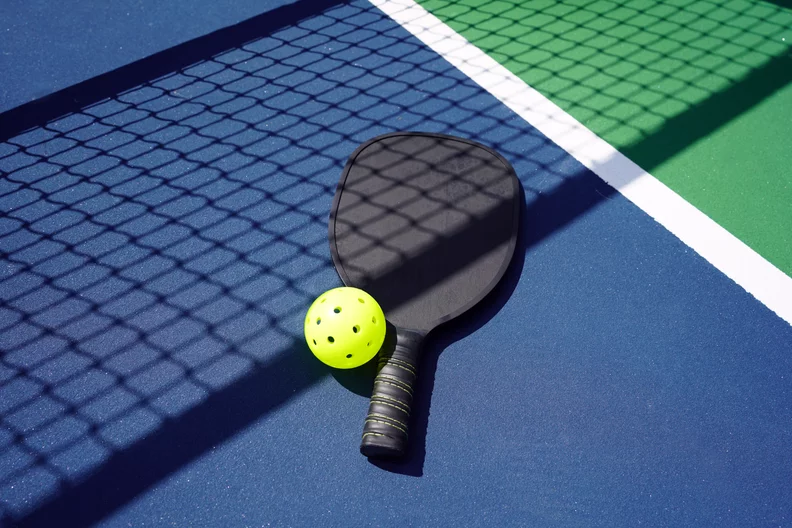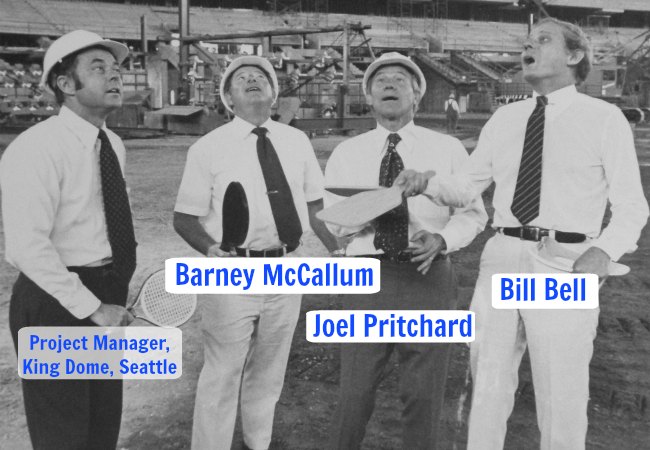Pickleball Explained: Ultimate Guide to Its Origins, Fun Facts, and Game Rules

Introduction
Pickleball is a dynamic and engaging sport that has captured the hearts of millions around the world. Combining elements from tennis, badminton, and table tennis, this game offers a unique blend of excitement, strategy, and physical activity. Whether you’re a seasoned athlete or a curious beginner, pickleball has something for everyone. In this guide, we’ll delve into the fascinating origins of the game, share some intriguing fun facts, and provide a detailed overview of the rules to get you started on your pickleball journey.

The Origin of Pickleball
The story of pickleball began in the summer of 1965 on Bainbridge Island, a picturesque retreat near Seattle, Washington. Joel Pritchard, a congressman, and his friend Bill Bell, a successful businessman, were looking for a way to entertain their families during a lazy summer afternoon. With limited resources at their disposal, they decided to improvise. They found an old badminton court, but without a full set of equipment, they had to get creative.
Using ping-pong paddles and a perforated plastic ball, Pritchard and Bell devised a game that was simple yet captivating. They lowered the badminton net and began playing, quickly realizing they had stumbled upon something special. Barney McCallum, another friend, joined them, and together they refined the rules and gameplay, leading to the birth of pickleball.

The Name “Pickleball”
The name “pickleball” has two charming and debated origin stories. One story suggests that the game was named after Joel Pritchard’s family dog, Pickles, who loved to chase the ball during early games, leading the family to affectionately call it “Pickle’s ball,” which eventually became “pickleball.”
The other story posits that the name came from the term “pickle boat” in rowing, which refers to a crew made up of leftover oarsmen from other boats. Joan Pritchard, Joel’s wife, likened the game to this concept because it combines elements from different sports like tennis, badminton, and ping-pong. While both stories have been recounted by the founders and their families, the true origin might be a blend of both. Regardless of which story is true, the quirky and memorable name has certainly contributed to the game’s charm and appeal.
Rules of the Game
The Court
- Dimensions: A standard pickleball court measures 20 feet by 44 feet, identical to a doubles badminton court. The net is set at 36 inches high at the sidelines and 34 inches high at the center. These dimensions make the court smaller than a tennis court, promoting quick reflexes and strategic play.
- Markings: The court is divided into two service areas on each side, separated by a centerline. Additionally, there is a 7-foot no-volley zone, commonly referred to as the “kitchen,” on either side of the net. The no-volley zone is crucial in preventing aggressive smashes near the net, adding a layer of strategy to the game.
Basic Rules
Serve
- Underhand Serve: The serve must be executed underhand, with the paddle contacting the ball below the server’s waist. This rule ensures that the serve is more about placement and control rather than power.
- Diagonal Service: The serve must be directed diagonally across the court, landing in the opponent’s service box. Only one serve attempt is allowed, except in the event of a let, where the ball touches the net but still lands in the correct service box. In such cases, the serve is retaken.
Scoring
- Serving and Scoring: Only the serving team can score points in pickleball. Games are typically played to 11 points, and a team must win by a margin of 2 points. This scoring system keeps games competitive and exciting, often leading to intense rallies and strategic plays.
- Winning the Serve: When the serving team loses a rally, the serve passes to the opposing team. In doubles play, both partners on a team get a chance to serve before the serve switches to the other team. This system is known as the “side-out” scoring method.
Double Bounce Rule
- Mandatory Bounces: To promote longer rallies and reduce the advantage of serving, the double bounce rule requires that the ball must bounce once on each side of the net before players can hit it in the air (volley). This rule encourages strategic placement of shots and enhances the game’s overall flow.
No-Volley Zone (The Kitchen)
- Zone Restrictions: The no-volley zone, or kitchen, extends 7 feet from the net on both sides. Players are not allowed to volley the ball while standing in this zone. This rule prevents aggressive net play and promotes strategic shot placement and rallies.
- Stepping In: Players can step into the kitchen to play a ball that has bounced within the zone, but they must exit the zone before volleying. This adds a layer of complexity and strategy to net play, making it a critical aspect of pickleball.

Facts
Pickleball is not just a fad, it’s a global phenomenon. From its humble beginnings in the United States, the sport has spread to numerous countries, including Canada, Spain, and India. Its inclusive nature and accessibility make it a favorite among people of all ages.According to the Sports & Fitness Industry Association, pickleball has seen a significant increase in participation, with over 4.8 million players in the United States alone. The sport’s growth rate is impressive, with more and more people discovering the joy of pickleball every year.
Explore Pickleball venues near you
Advancements of Pickleball in India
Pickleball has seen a remarkable rise in popularity in India over the past few years. The sport has captured the attention of enthusiasts across the country, leading to the establishment of numerous pickleball clubs and associations. Cities like Mumbai, Bangalore, and Delhi have become hubs for pickleball activity, hosting regular tournaments and events. The All India Pickleball Association (AIPA) has played a crucial role in promoting the sport, organizing training camps, and facilitating international participation. With growing media coverage and increased access to facilities, pickleball is quickly becoming a favorite pastime for many Indians. The sport’s inclusive nature and ease of play make it particularly appealing to a diverse demographic, fostering a sense of community and healthy competition. As interest continues to grow, the future of pickleball in India looks incredibly promising, with the potential to become a mainstream sport enjoyed by millions.
Khelomore.com and the All India Pickleball Association are partnering up to transform Indian pickleball!
Pickleball is a sport that offers something for everyone, regardless of age or skill level. Its rich history, unique blend of elements from other sports, and straightforward yet strategic rules make it an incredibly enjoyable and accessible game. Whether you’re looking to stay active, socialize with friends, or engage in friendly competition, pickleball is the perfect choice. So grab a paddle, find a court, and experience the excitement of pickleball for yourself. It’s a game that is easy to learn, fun to play, and hard to resist.



